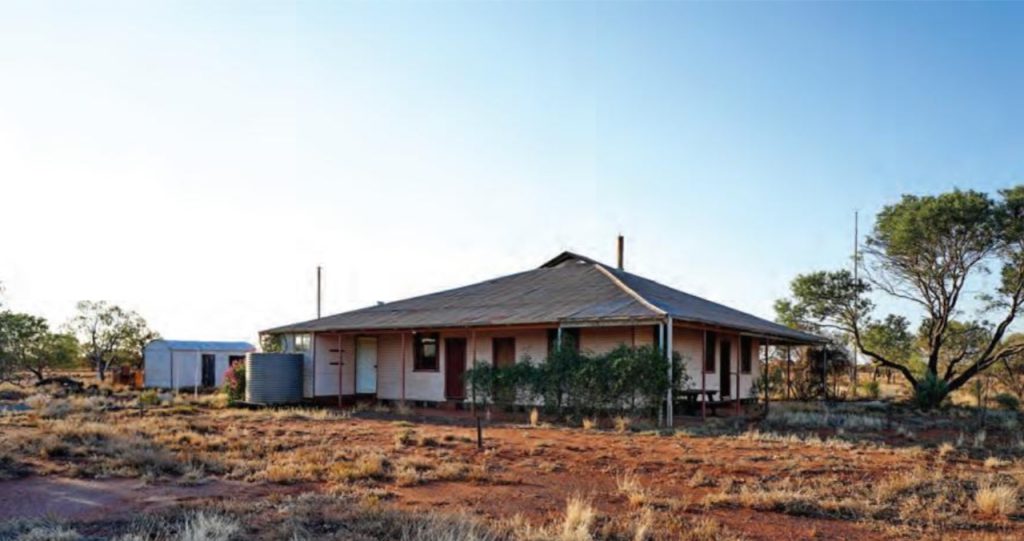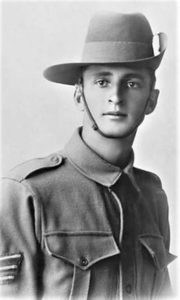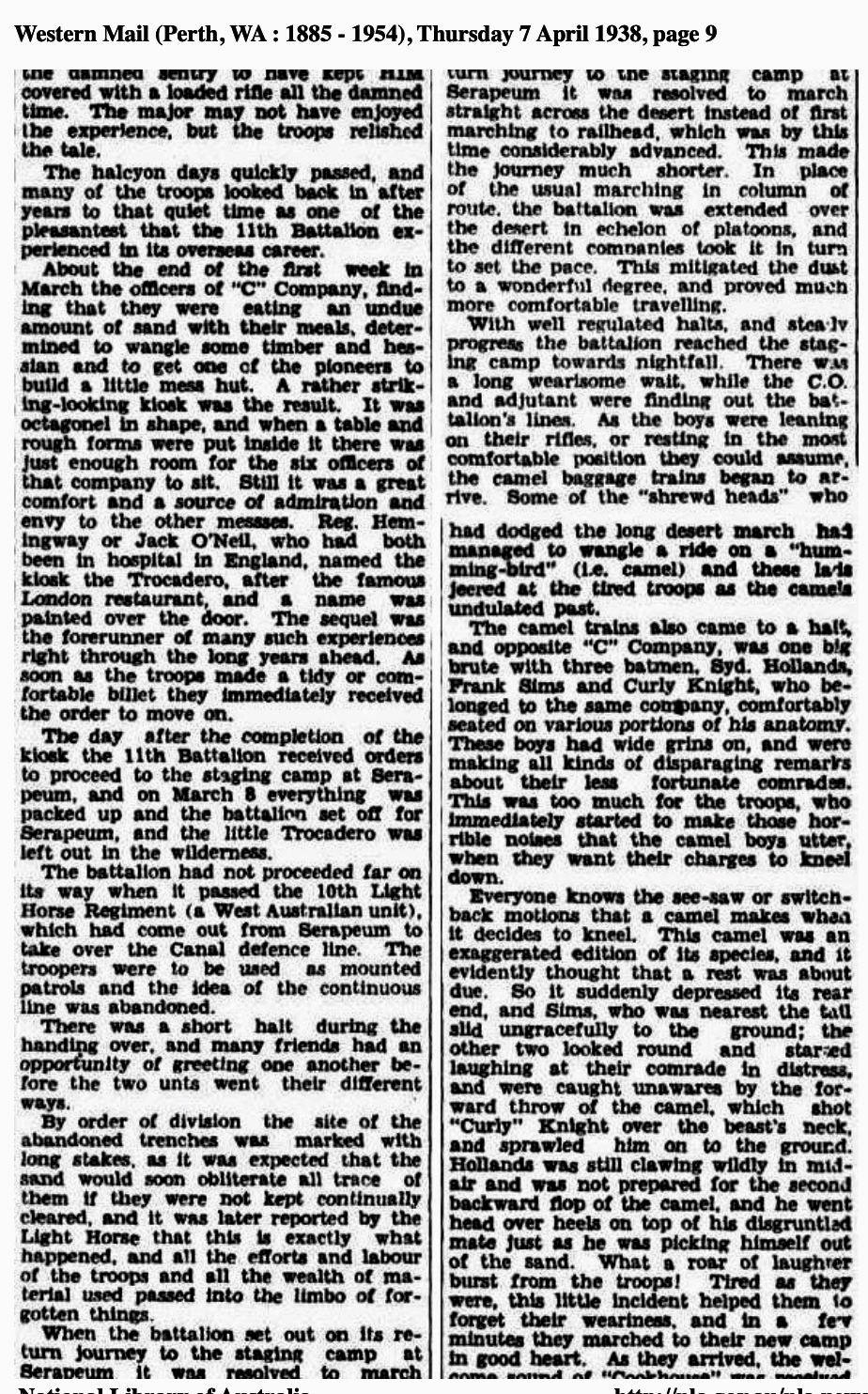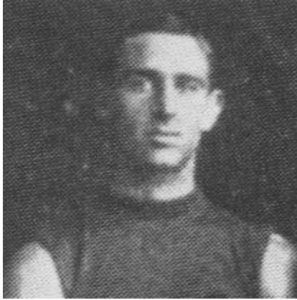WX8207 HEWBY, Arthur Sydney, known as ‘Snow’
Snow was well known and respected with 2/4th MGB – he was a former player for Perth Football Club and played several interstate games including the memorable WA win against Victoria in 1921. He was coach of the successful 2/4th Football team at Northam Army Camp.
Above: Young Snow – Perth Football Club

B Company Headquarters
Back L-R JA McGregor, GP Biggs, G Japp, HA Jackson, A Brookbank, WJ Robinson. Centre AMcD Drummond, SM Hogben, JC Colbey, EE. Miller, GJ Doodson, F Vaughan, CH Dunn, J Hill. Front TW Zeeb, C Flakemore, AS Hewby, Capt GMcR Bunning, Capt AR Smith-Ryan RS Campbell, TJ Barnett.

2/4th MG Battalion Football Team 1941
Back Row:- Con Ryan (Noresman), Mac McCaffery (NSW), Lou Daily ( Capt, Subiaco, Vic, WA, Sandover Medallist 1935), Snow Hewby (Manager, Perth Football Club and1921 carnival for WA), Ron Anderson (Swan Districts), Frank Clarke, Tommy Tompkins.
Middle Row:- Clive Helmrich (Swan Districts), Ron Badock (Kalgoorlie Miners, Norseman Tigers), Joe Pearce (Swan Districts), Bob Riebe, Cliff Spackman (Kalgoorlie Miners), Jim Dore (Perth & WA State Baseball)
Front Row:- Jack Ovens, John Smith, Jack Wheelock, Bill Innes (East Perth & Cycling), Harry White ( Swan Districts), Alf Musman (SA & East Perth)
Arthur Syndey Hewby, known as ‘Snow’ was born 1898 Gingin to parents Arthur George Hewby and Louisa Emma Dewar who married 1894. He joined 2/4th’s ‘B’ Coy HQ as Warrant Officer Class 2 under Commanding Officer Capt. Gavin Bunning (also a former Scotch student).
He worked on the Burma-Thai Railway with the ill-fated ‘D Force Thailand, V Battalion suffering high rates of illness and deaths in appalling work and camp conditions. Snow was recovered at the end of the war from Ubon POW Camp, Thailand.
Snow was a WW1 Veteran.
He enlisted 24th March 1916, leaving Australia with 7th Reinforcements for 44th Battalion. With his Service Number of 1840 he worked his way through the ranks to 2nd Lieutenant in France. He was wounded in action on 20th October 1917 with a gunshot wound to his left side. He returned to WA safely.
44TH BATTALION WW1 – WESTERN FRONT
‘Raised at Claremont, Western Australia, in February 1916, part of 11th Brigade, 3rd Division. Following initial training in Australia the battalion embarked on 6 Jun 1916 aboard HMAT A29 Suevic for England where they spent a further four months training before moving to France on 27 November 1916, entering frontline trenches of Western Front on 29 December 1916.
During the very cold winter of 1916-17 they alternated between manning front line positions and providing men for working details when in the rear. Prior to their first real taste of battle which came at Messines, Belgium 7-10 Jun 1917, they had been billeted in a rest area at Coulomby and had previously participated in an unsuccessful, two company raid on enemy positions, an ill-fated effort involving almost half the battalion on 13 March 1917.
During the following months 44th Battalion was heavily employed in the Ypres sector, taking part in another major battle to capture Broodseinde Ridge part of the Ypres offensive of 1917.
The attack began before dawn 4 October 1917. The Australian troops involved were shelled heavily on their start line. One seventh of their number became casualties even before the attack began. The attacking troops were confronted by a line of troops advancing towards them; the Germans had chosen the same morning to launch an attack of their own. The Australians forged on through the German assault waves and gained all their objectives along the ridge. It was not without cost, however. German pillboxes were characteristically difficult to subdue, and the Australian divisions suffered 6,500 casualties.
Of the 992 men from the battalion who were involved in the Ypres operations, only 158 emerged unwounded when it was relieved for a rest on 21 October.’
It was on 20 October 1917 during the battle for Broodseinde Ridge that ‘Snow’ Hewby was wounded and evacuated with a GSW to his left side.
(We wish to acknowledge the above information is from Birtwhistle and AWM)
______
Snow married 1925 to Elsie Day. At that time he was manager of Lake Mason Station, Sandstone This station today is a Conservation Park. Lake Mason was established in 1906 as a cattle station, known as ‘Berrigun’. Later it changed to sheep and wool production. That continued for more than 80 years. In 2000 the state government purchased Lake Mason.
Below: Original homestead.

When Snow enlisted WW2 16 Aug 1940, he recorded his birth date as 1900 (the enlistment cut off age was 40 years) when in fact he was born 1898 at Gingin.
Prior to enlisting WW2 Snow was publican at the Southern Cross Hotel.
The Hewby Family
His mother Louisa ‘Lu’ Hewby died very young at Guildford Feb 1910 aged 35 years. Snow would have been about 12 years of age. He then had an older brother William ‘Bill’ John Hewby b. 1896 and a younger brother Lionel George Hewby b. 1904. Both Bill and Snow were students at Scotch College, Swanbourne excelling at sport – football, cricket and rowing.
Snow’s youngest brother Lionel tragically died of diphtheria in 1911 aged 7 years. Lionel had gone to stay in Wagin with friends during the school holidays, spending a few days attending the local school where he contracted diphtheria and soon after died in hospital. (there were at least 3 other deaths)

William John ‘Bill’ Hewby Service No 3678 was KIA 30 May 1916, WW1 with 11th Batallion, Fleubaix, France. He was just 20 years old. Bill enlisted 4 Oct 1915 with the 12th reinforcements 11th Battalion, aged 19 years 8 months. He was 5’ 11 ½ “ tall and working as a survey cadet.
Leaving Fremantle the 11th Battalion reinforcements arrived at their training camp in Egypt. We know Bill was at Habieta.
Western Front – 11th Battalion AIF WW1
‘In early 1916, the 11th battalion sailed to Alexandria on the Empress of Britain. From Alexandria, it travelled by train to bivouac at Tall al Kabir. At this time, the battalion received 367 reinforcements from Australia before undertaking defensive duties around Gebel Habieta, guarding the Suez Canal. In February, the AIF was re-organised and expanded. This saw the veteran battalions split to provide cadres for new battalions and as a part of this process, the 11th Battalion provided personnel to the 51st Battalion, by transferring the even numbered sections to the new battalion. At this time, the battalion received four Lewis Guns for organic direct fire support.
On 30 March 1916, as the AIF’s infantry divisions were transferred to Europe, the battalion sailed from Alexandria aboard the HMT Corsican. It arrived at Marseilles, France, on 5 April and then moved by train to Flêtre where it was billeted until the 19th when it moved to Sailly, where it commemorated Anzac Day on 25 April. In mid-May, after a period of acclimatisation and training to prepare them for the European battlefield, the 11th Battalion moved up to the front line around Petillon in the Fleurbaix sector, with a strength of 27 officers and 929 other ranks. A further draft of reinforcements, totalling 69 men all ranks, arrived on 25 May, and on 30 May the battalion had its first experience of combat on the Western Front.
Late that evening, German artillery bombarded the Allied line around the Cordonnerie salient, before infantry launched a raid on the 11th Battalion’s trenches. In the fighting that followed the 11th Battalion lost four men captured, 37 killed and 70 wounded.’ From AWM
‘They travelled by train to Flêtre where the battalion was billeted until the 19 April, before moving to Sailly, where it commemorated Anzac Day on 25 April. In mid-May, after a period of acclimatisation and training to prepare them for the European battlefield, the 11th Battalion moved up to the front line around Petillon in the Fleurbaix sector.
The 11th Battalion were in the front lines near Cordonnerie Farm at Fleurbaix on 30 May 1916 when the Germans subjected them to an intense artillery bombardment followed by a small raid. The battalion lost 36 men KIA, 61 WIA and 6 missing. We believe Bill Hewby was one of those killed in the attack.’ (information from Birtwhistle History)
Bill’s father received no further details other than his son was KIA. The AIF returned to Bill’s family the following items:
Identity disc, belt, cigarette case (damaged), knife, mirror, fountain pen, wallet, letters, photos and note book.
It is almost as if Bill Hewby missed the war.
Below: Australian soldiers in the rain at Billets Fleurbaix, May 1916.

Pozières and Mouquet Farm
Bill Hewby missed the 11th Battalion’s action throughout June 1916 and the remainder of the war –
placed in support of the front as it was brought back up to strength. At this time, the battalion’s organic fire support was increased by the addition of two extra Lewis Guns. The following month, they moved to the Somme and were committed to fighting around Pozières. After arriving at Albert 19 July amidst a gas attack, the battalion spent the next couple of days preparing to attack, working to improve trenches and cache stores, during which they were subjected to heavy artillery bombardment.The attack was put in just before midnight on 23 July and was a costly success.
Amidst heavy casualties, the 11th Battalion took the forward German trenches and amidst the confusion of the fighting advanced beyond their limit of exploitation, entering Pozières and moving beyond where they became embroiled in close quarters fighting. After capturing five artillery pieces, the battalion’s officers and non-commissioned officers eventually managed to regain control of the advance and the battalion was brought back into a defensive line along their first objective. At dawn, patrols from the battalion entered the village again and cleared out the cellars beneath the battered remains of the village’s buildings, capturing over 40 prisoners.
During the night of 24/25 July, the Australians attacked again, but after establishing a new defensive line, the 11th was forced to withdraw after suffering heavily from both friendly and enemy shelling. In the morning of 25 July, further casualties were sustained by German artillery. German infantry then launched a counterattack on the battalion’s right, but the Australians managed to hold their ground. They remained in the line throughout the day, before the 19th Battalion arrived as part of the 5th Brigade‘s relief of the 3rd Brigade. Having lost 19 officers and 512 other ranks killed, wounded or missing, the battalion had suffered the most of all the 3rd Brigade’s battalions and was moved back to Berteaucourt to be rebuilt.

Above: we wish to acknowledge State Library of WA for the above photo. It had become necessary to defend the Suez Canal from enemy raids. The Canal was a vital waterway for the war.
Below: Capt Walter C. Belford M.A. regularly published in The Western Mail the events of 11th Battalion in WW1. This covers the 11th Battalion’s posting to Gebel Habiata, Suez Canal 1916 of which Bill Hewby was part of.








